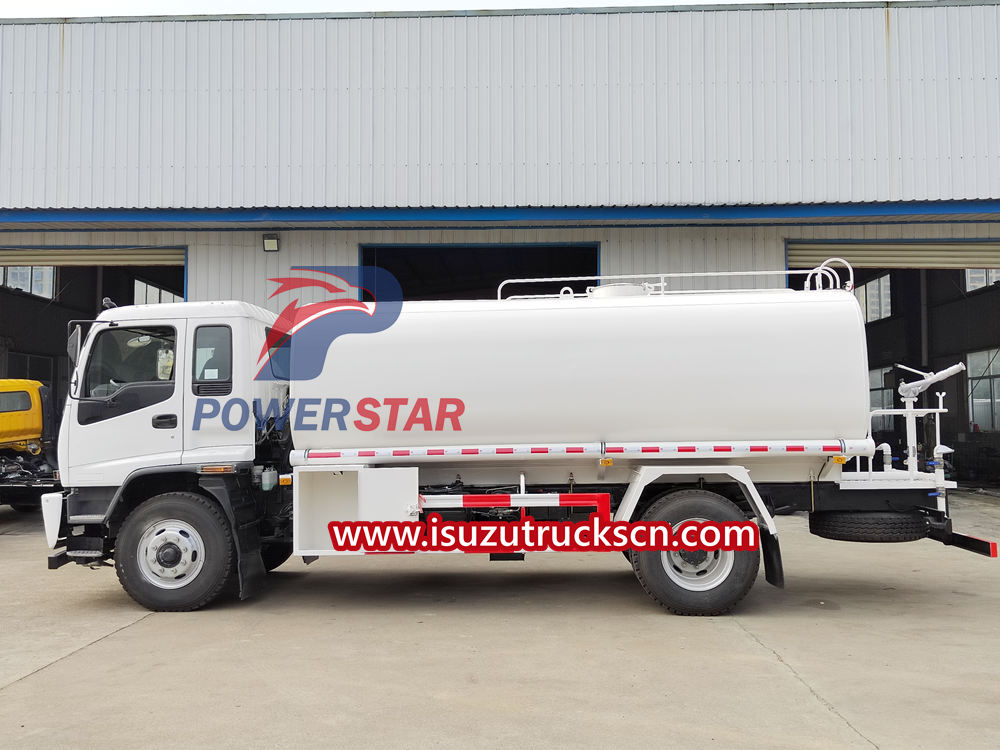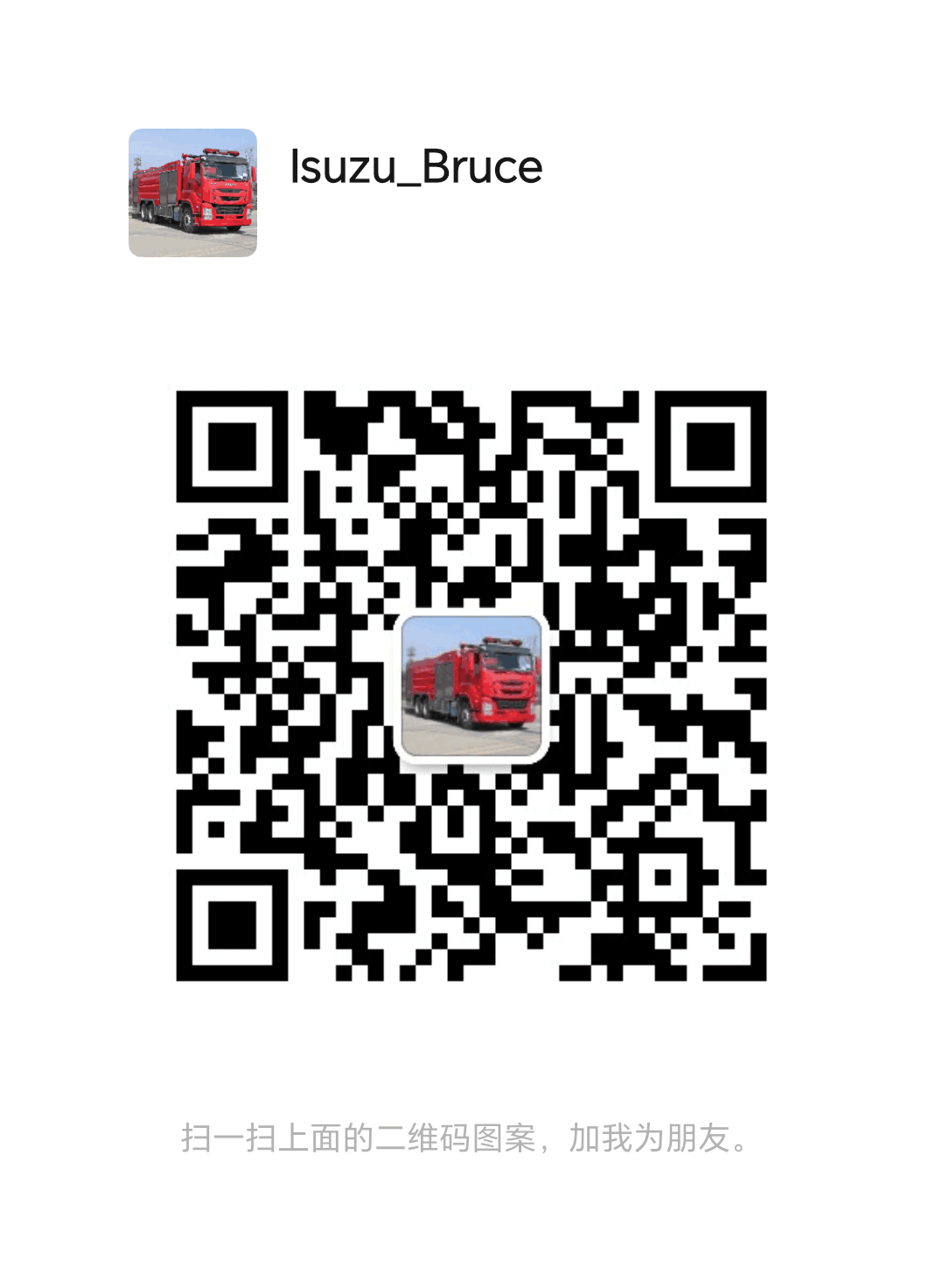


Isuzu water tanker is a special vehicle mainly used for road cleaning, landscaping, irrigation, pest control and fire extinguishing.
In terms of road cleaning, Isuzu water tanker can clean the dirt on the road surface by spraying high-pressure water guns and keep the road clean; in terms of landscaping, Isuzu water tanker can water it by spraying or spraying to maintain the good growth of plants; Isuzu water tanker In terms of irrigation, the water in the water tank can be sprayed to the place to be irrigated through the spray device, which is convenient and fast; in terms of pest control, Isuzu water tanker can control plants by spraying pesticides; in terms of fire extinguishing, Isuzu water tanker can Sprinklers can use high-pressure water pumps to spray or spray water onto the fire scene to extinguish the fire.
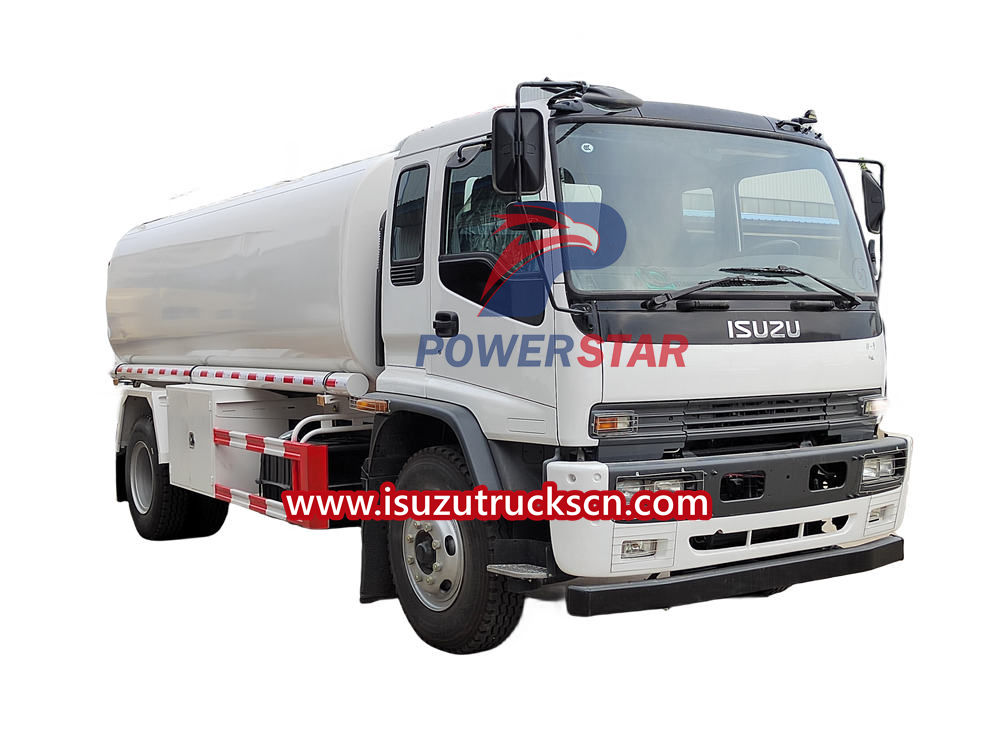
First of all, in the preparation stage before the Isuzu water tanker operation, the operator must conduct a comprehensive inspection and preparation work on the sprinkler truck, check whether the chassis part is normal, understand the construction site conditions and technical requirements, and ensure the safety and convenience of the water source and water intake location. At the same time, check whether the connection parts such as the water suction pipe are intact to ensure smooth operation. When there is no water in the water pump, water injection work must be done to ensure the normal operation of the water pump.
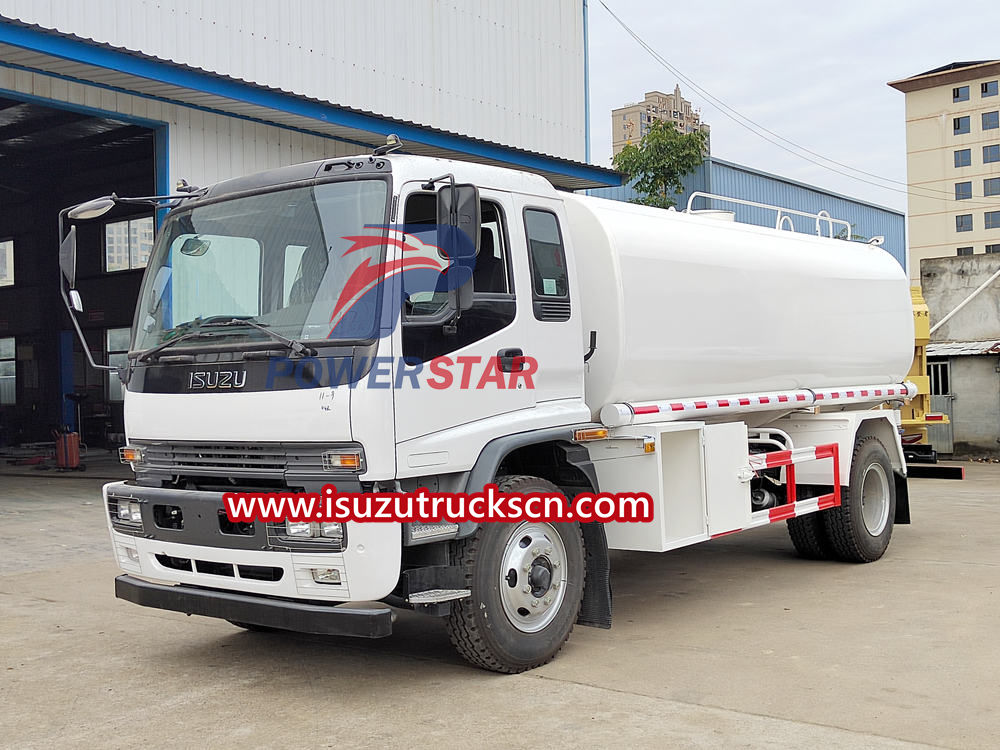
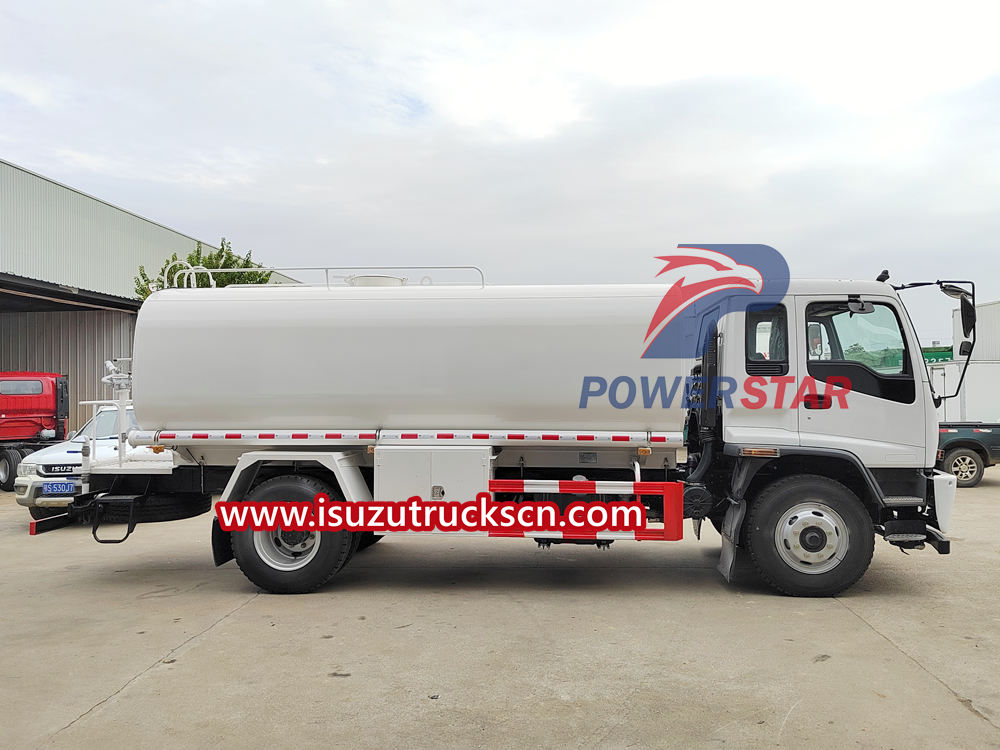
1. Preparation before homework:
1). The chassis part of the car shall be inspected and prepared according to the car operating regulations.
2). Understand the construction site conditions and technical requirements, water intake locations and water source conditions.
3). Check whether the connection parts are loose and whether the water suction pipe is broken, leaking or blocked.
4). The water absorption point should be selected in a solid and flat place to facilitate the safe parking of the sprinkler truck. The water suction height must not exceed the range allowed by the Isuzu water tanker's suction lift, and the water outlet should be closed when absorbing water.
5). When the Isuzu water tanker is pumping water and there is no water in the water pump, an appropriate amount of clean water must be injected into the pump from the water inlet.
2. Operation and driving requirements
1). When pumping water, first depress the clutch, engage the gear of the power take-off box, slowly increase the accelerator until the engine reaches the specified speed, and then proceed with the pumping operation. It is strictly prohibited to slam the accelerator.
2). When operating the power take-off box to shift gears, the air pressure must be shifted within the specified range so that the gears all match.
3). The amount of water and vehicle speed during spraying operations should be controlled as required. Vehicles should maintain a constant speed and should not go faster or slower in violation of spraying requirements.
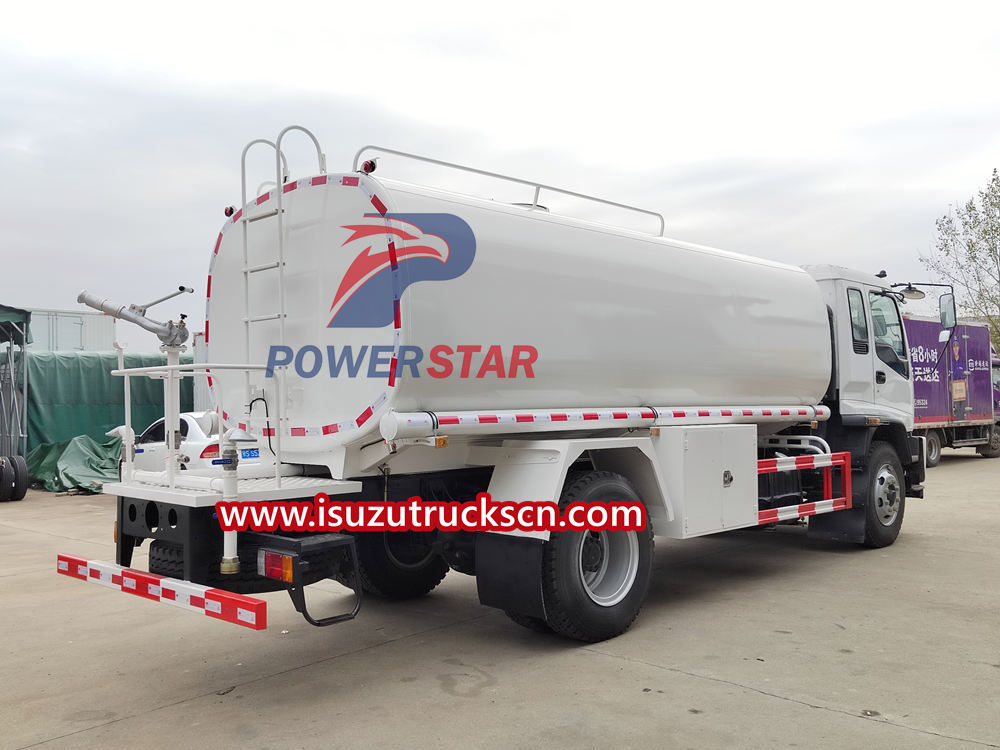
4). According to the spraying requirements, carry out front spraying, ground spraying or special spraying and open and close the corresponding valves.
5). When the Isuzu sprinkler truck is driving uphill, downhill or on curves, it is not allowed to drive at high speed and avoid emergency braking to prevent accidents.
6). At the end of the operation, disassemble and assemble the water pumping hose, close the inlet and outlet of the interoperable reversing valve or the water inlet valve, reduce the throttle, remove the power take-off box gear, and allow the engine to idle.
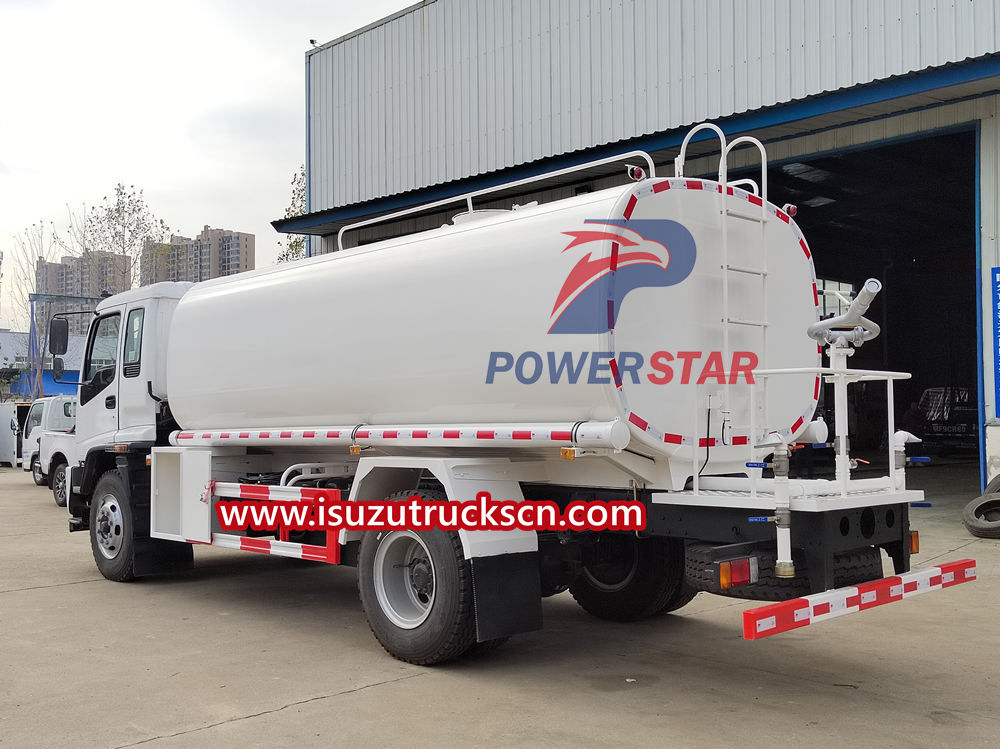
Finally, after the operation is completed, related work also needs to be done, such as drainage, anti-freeze etc.
When the Isuzu water tanker is not used for a short period of time, the water in the tank needs to be drained for unloading and rust prevention. When the temperature is below 0°C, the accumulated water in the water purification tank, pipeline system and water pump should be drained after daily operations to avoid freezing of mechanical parts. In addition, when parking the Isuzu water tanker, choose a safe place that does not hinder traffic. When it is not used for a long time, use square wood or other rigid objects to secure it to ensure the stability and safety of the vehicle.
